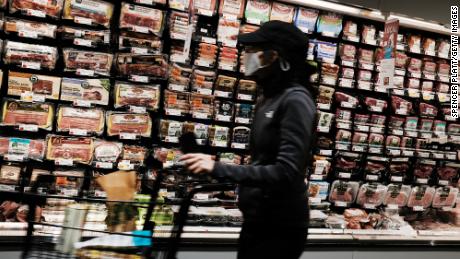The Conference Board’s consumer confidence index dipped slightly to 106.4 in May, down from a revised 108.6 in April, according to data released Tuesday. The decline was smaller than the 103.9 analysts expected, according to Refinitiv.
“We still have headwinds from the war in Ukraine, rising prices, interest rate hikes, but consumers have been weathering it pretty well — even though we did have a slight decline, it’s relatively a strong reading,” said Lynn Franco, senior director of economic indicators at The Conference Board. “And a lot of that comes from the fact that confidence has been supported by strong job growth, so that’s helping to offset some of these challenges that consumers have been facing over the last couple of months.”
For most Americans, the three biggest expenses are
housing, transportation and food — all of which have seen significant price increases over the past year.
April’s core Personal Consumption Expenditures inflation index, which doesn’t include the volatile food and energy prices,
rose by 4.9% year-over-year, down from a 5.2% increase in March, the Commerce Department reported Friday.
Home prices
rose by more than 20% in March from the previous year, according to the S&P Case-Shiller home price
index released Tuesday, marking the highest year-over-year price change in more than 35 years of data.
Airfares
have been on the rise, and
gas prices set a fresh record over the holiday weekend, landing at a national average of $4.62 per gallon of regular gasoline on Memorial Day. This time last year, the national average was $3.05 per gallon. The rising prices reflect a confluence of factors, including high demand and ripple effects from Russia’s invasion of Ukraine.
Although motorists are encountering a fair bit of sticker shock, things have been worse. When accounting for inflation, gas prices were the highest in June 2008,
hitting $5.38 per gallon, according to the US Energy Information Administration.
Yet despite higher prices, consumers are still spending. US retail sales in April were up 0.9% from the month before and were 8.2% higher than April 2021,
the Commerce Department reported earlier this month.
“We do see a softening in the durable, big-ticket item purchases, and part of that is interest rate hikes and part of that also is that consumers are now pivoting from big-ticket items to services,” Franco said. “You can only buy so many washing machines. So now it’s the shift to services and going back to dining out, movies, sporting events and so forth.”
But this period of high inflation is
causing a split in how people are
spending. Retailers have reported that
while luxury sales have remained strong, lower-income customers aren’t buying as much discretionary items and are instead seeking out lower-priced generic products.
Overall, consumers are starting to pull back on the purchases they make, according to
survey data released last week by The NPD Group. During the first quarter of 2022, consumers bought 6% fewer items at retail than in the first three months of 2021, according to the New York-based market research firm.
“There is a tug-of-war between the consumer’s desire to buy what they want and the need to make concessions based on the higher prices hitting their wallets,” Marshal Cohen, NPD’s chief retail industry adviser said in a statement.
Inflation remains top of mind for consumers, The Conference Board’s Franco said, noting inflation expectations in May were virtually unchanged from April’s elevated levels.
“Looking ahead, expect surging prices and additional interest rate hikes to pose continued downside risks to consumer spending this year,” she said.


























